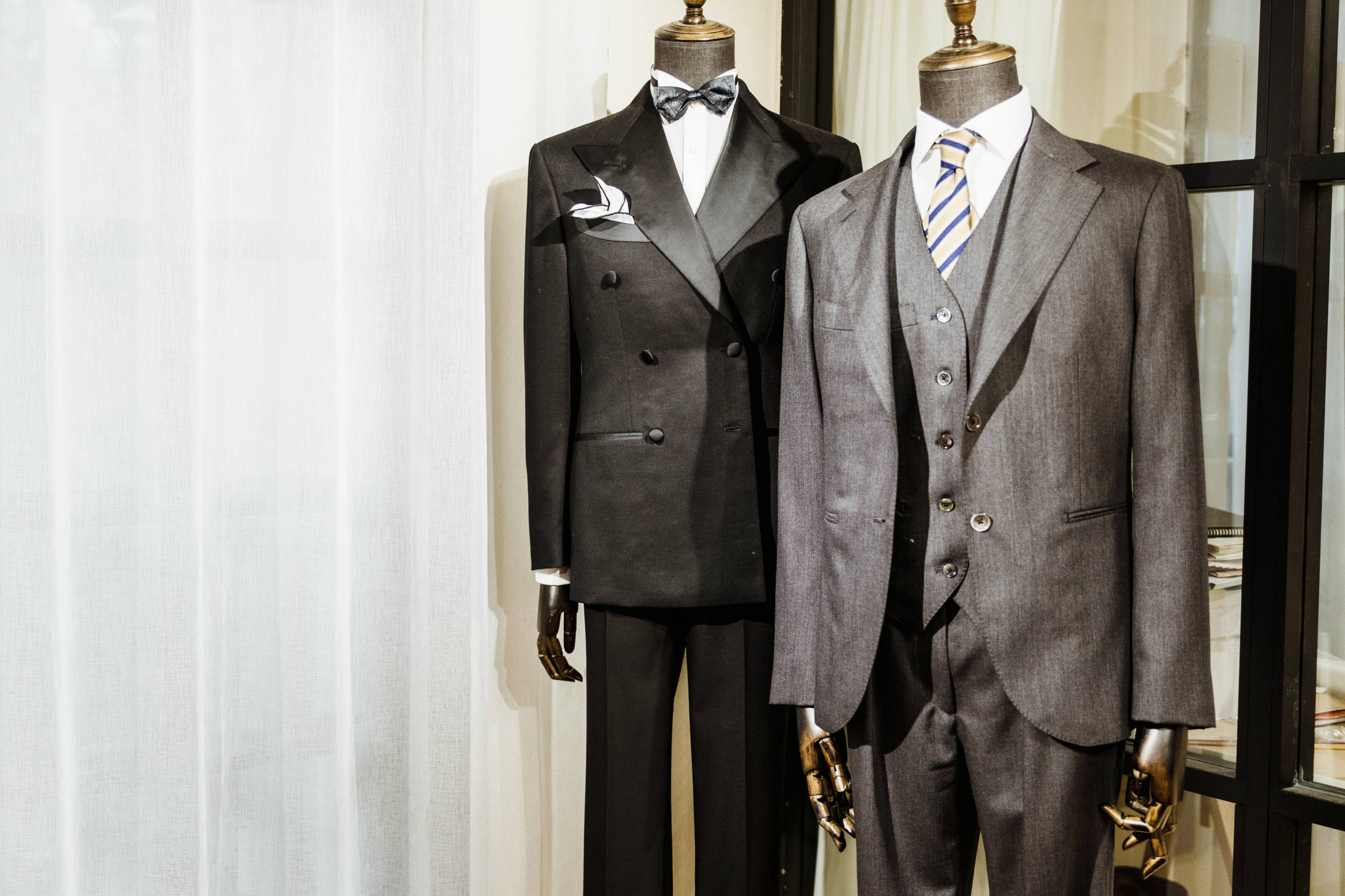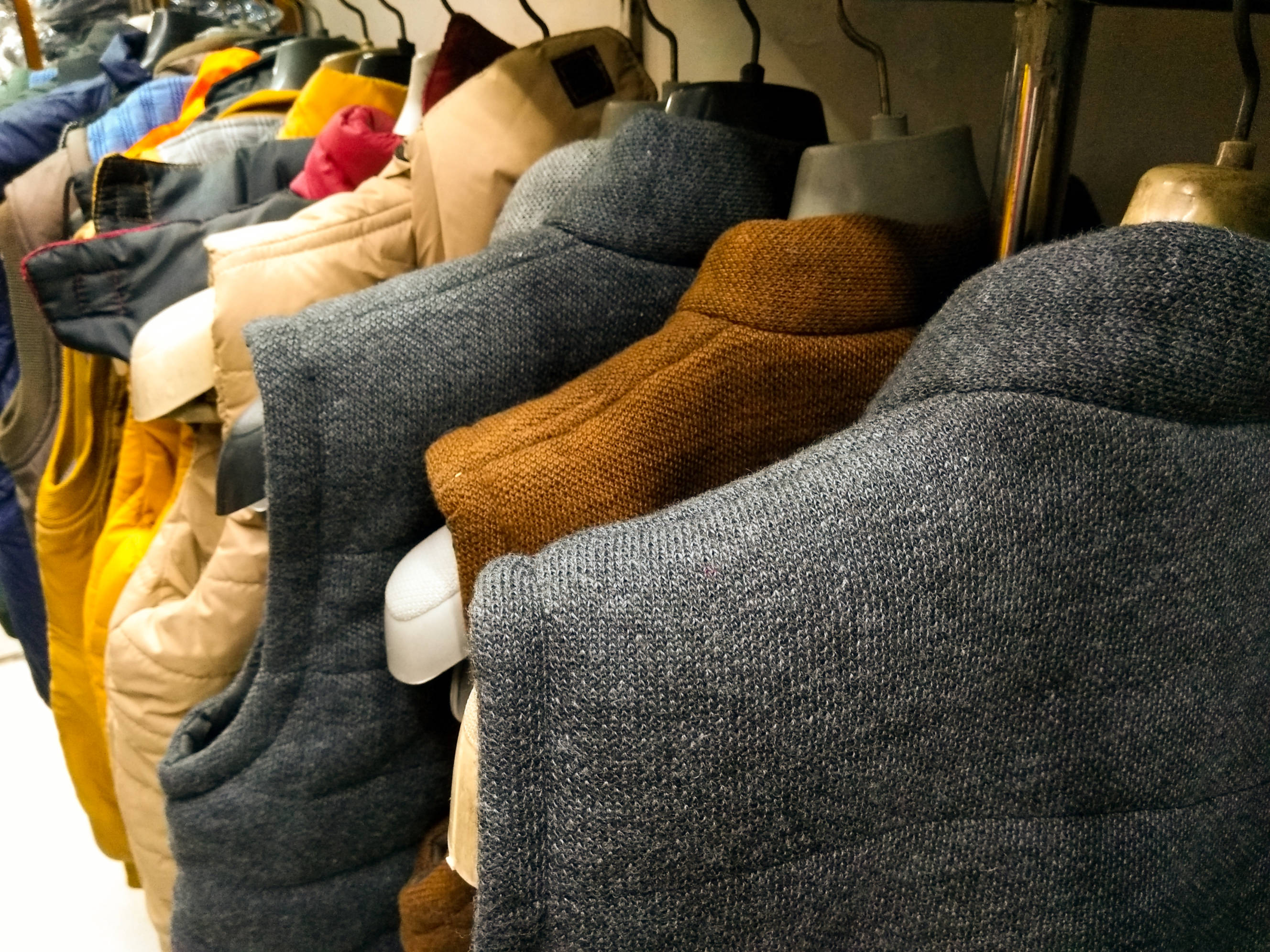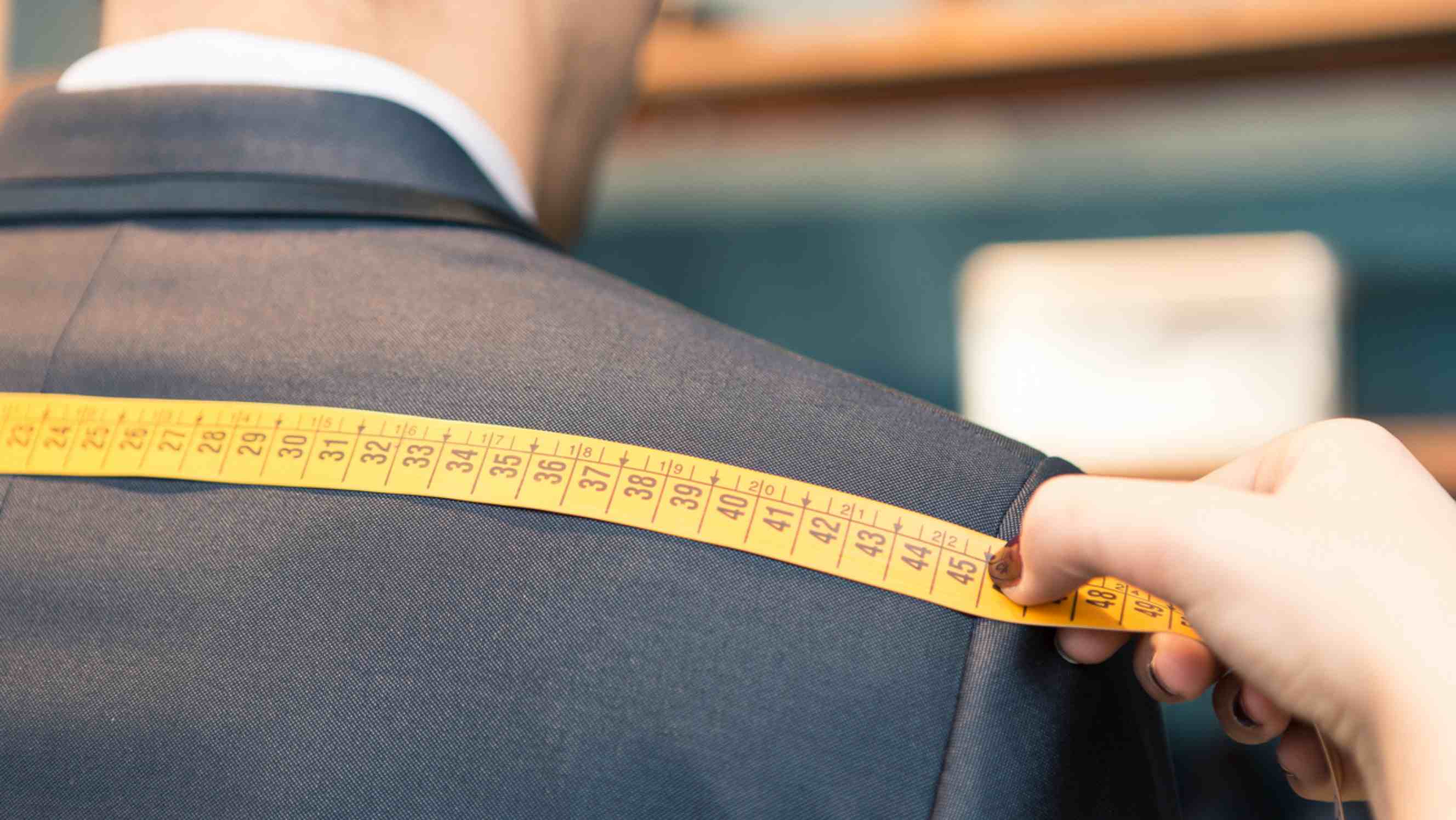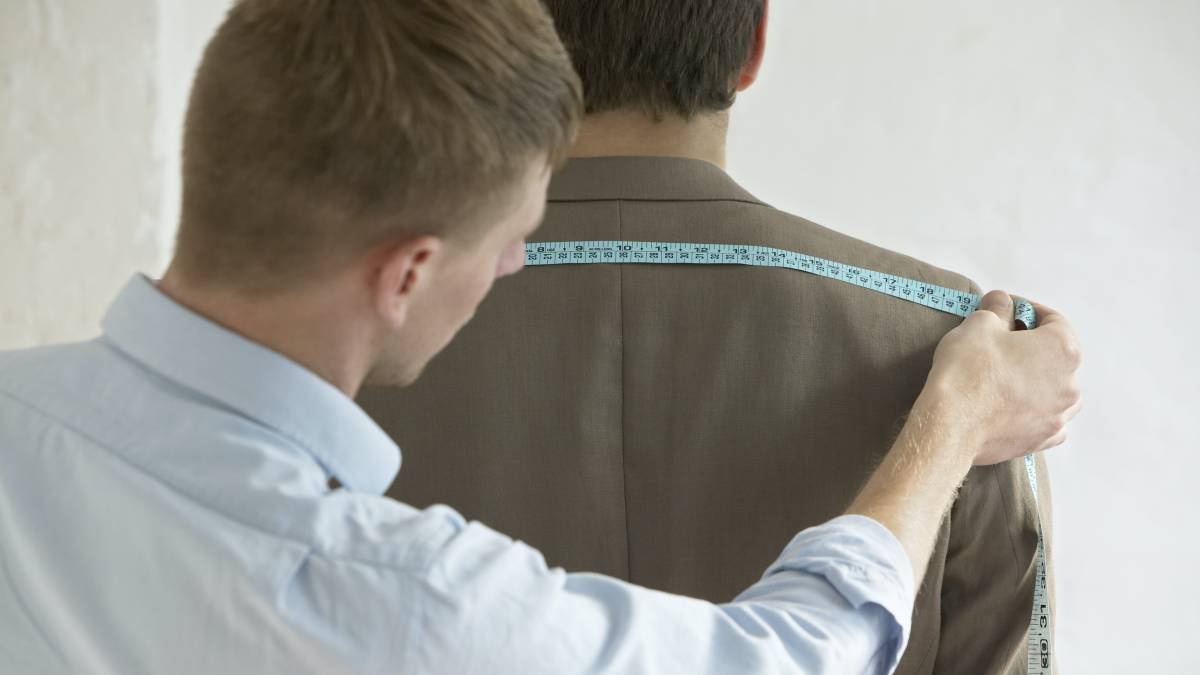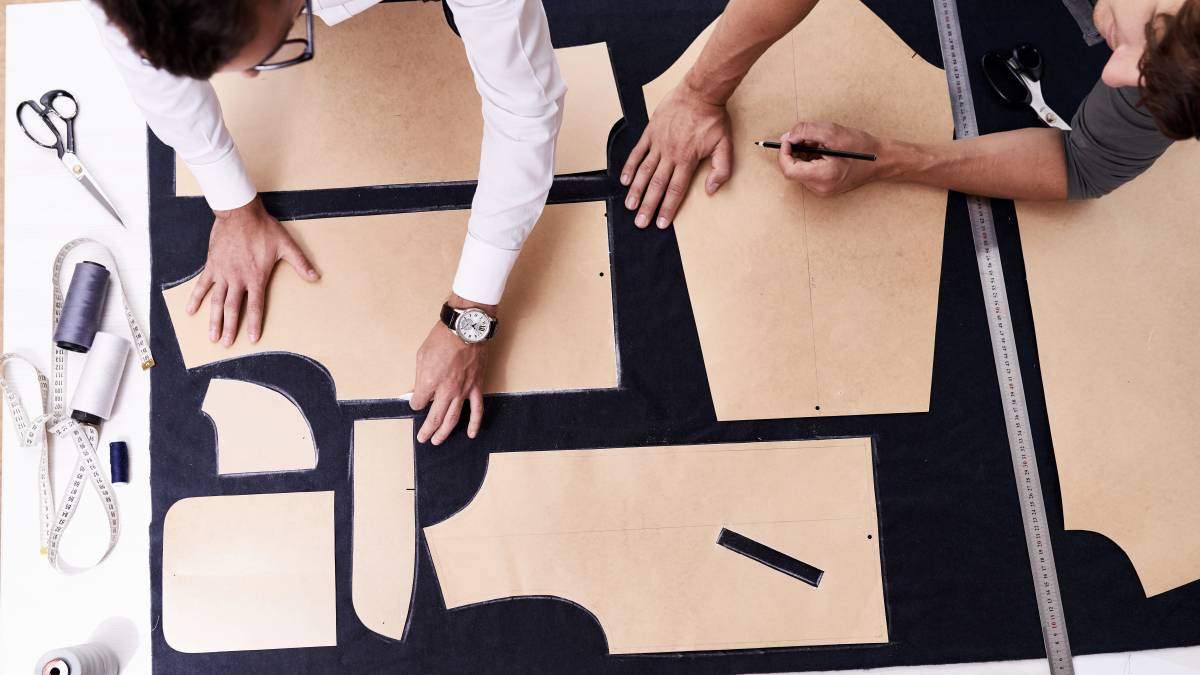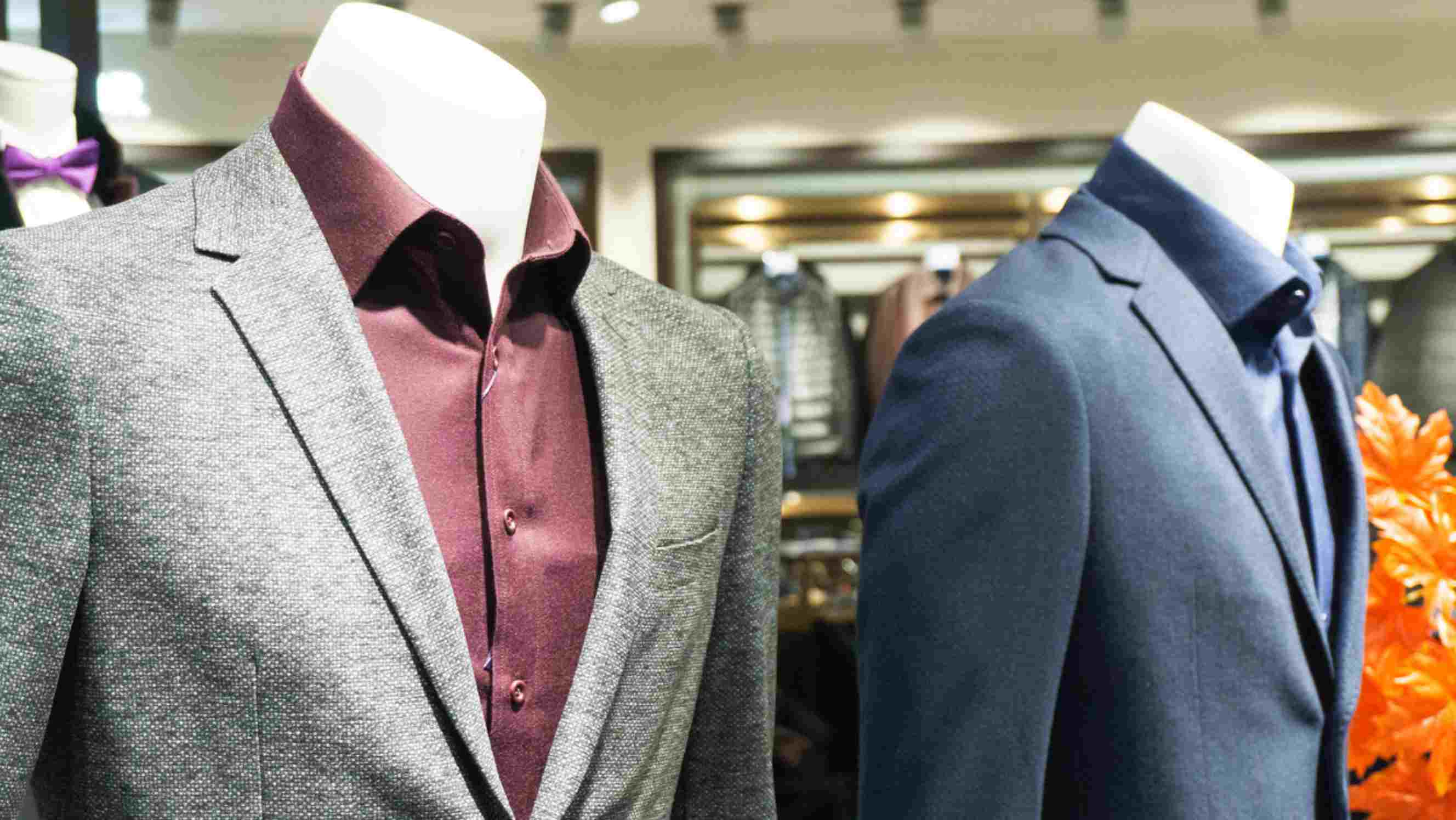
- Home/
- Comparisons/
- Suit Tailor/
- Tuxedo vs Suit
Tuxedo vs suit: Which one should you choose?
Comparing suits and tuxedos based on style, accessories, fit, fabrics, and more.
Last Updated on
Key Facts
- A tuxedo is a formal suit distinguished by satin or grosgrain facing on the lapels.
- A suit is a set of garments made from the same cloth, typically consisting of a jacket and trousers.
Whether you're gearing up for a black-tie gala or trying to find the perfect outfit for a casual wedding, the choice between a tuxedo vs suit is usually a tricky one. Both offer timeless elegance, but each has its unique characteristics and proper occasions tied to them.
This guide will dive into what makes tuxedos and suits different, explore their history, and provide insights into when to wear each one.
What is a tuxedo?
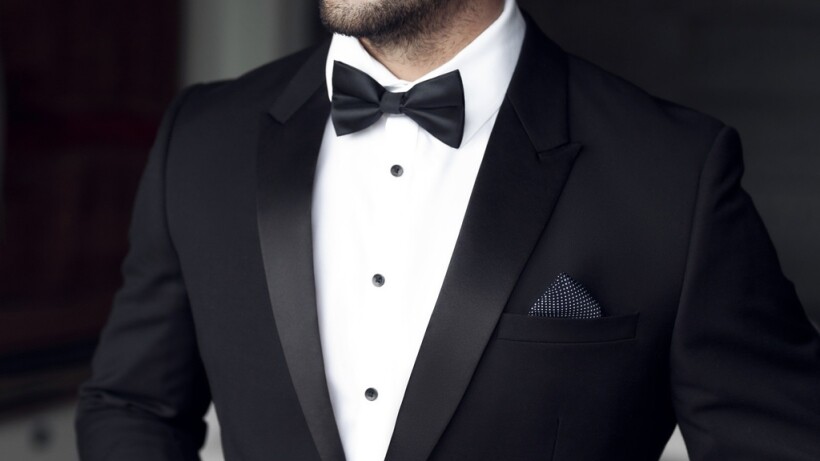
A tuxedo is a formal suit known for its sophisticated touches, such as satin or grosgrain facings on the lapels and buttons. Sometimes, tuxedos also have stripes down the side of the trousers.
Tuxedos are often reserved for events like black-tie dinners, gala affairs, or swanky weddings. When comparing a tuxedo vs jacket, the difference often comes down to the unique satin details that give the tuxedo its distinctive, polished look.
In short, it's perfect for making a lasting impression at high-profile events. If you're aiming for a classic, timeless aesthetic, a tuxedo is your go-to choice.
What is a suit? 
A suit is a matching set typically consisting of a jacket and trousers made from the same fabric. It's versatile, stylish, and suitable for a wide range of occasions—from office wear to weddings.
Unlike tuxedos, suits don't have those satin or grosgrain accents. Instead, they rely on clean lines and quality fabrics to make their mark.
There are various types of suits, each with its own flair. First up is the two-piece suit, which includes a jacket and trousers. This is your go-to for most business and social occasions.
If you're looking to step it up a bit, the three-piece suit includes a waistcoat (or vest) along with the jacket and trousers. It's a bit more formal and can add a layer of sophistication to your look.
Now, you might have heard terms like 'blazer' and 'suit jacket' thrown around. While they might seem similar, there's a distinct difference between blazers and suit jackets. A suit jacket is always part of a matched set, while a blazer stands alone and is often made of a solid colour or patterned fabric, making it a bit more casual.
Suit vs tuxedo: What are their key differences?
So, you're getting decked out for a special occasion, and you've hit that all-important question: what's the difference between a suit and tuxedo? It's not always crystal clear, and that's why we're here. We'll dive into key factors like fabric, design, and when to wear each one.
In terms of style

When it comes to suits and tuxedos, style is where you'll see some real distinctions. If you're prepping for a black-tie event, that's where tuxedos shine. For regular formal dress codes, suits can be a viable option. However, there are still many types of suits and tuxedos that need to be considered.
First, there are the double-breasted and single-breasted suits. A double-breasted suit jacket has overlapping front flaps and two parallel columns of buttons. It's a bit more formal and can really make a statement. On the other hand, a single-breasted suit is more versatile. It features one column of buttons and a sleeker profile. It also works for everything from board meetings to dinner dates.
And for women, there's also what we call a ladies dinner suit. Women's suits have come a long way and are now as stylish and diverse as men's suits. Most are often seen in black or navy and they can radiate elegance and power when worn. This makes them a fantastic choice for formal occasions.
In terms of accessories
When accessorising, tuxedos and suits call for different choices. A tuxedo generally pairs best with a bow tie, cummerbund, and studs to enhance its formal appeal. On the other hand, a suit with bow tie can offer a sophisticated yet slightly less traditional look for a formal event. A suit and necktie combination can also work well in modern, business-related settings.
Cufflinks add a touch of class to both tuxedos and suits, but they’re often more elaborate and luxurious with tuxedos. Pocket squares are also essential but follow different styling rules: a silk pocket square is classic for tuxedos, while suits can play with materials and patterns. To learn how to style a tuxedo perfectly, focus on the right lapel pin and opt for sleek shoes like patent leather oxfords.
For shoes, tuxedos demand high-shine black shoes for a polished finish. With suits, you have more freedom for colour and material—leather or suede in black, brown, or even oxblood can work.
In terms of fit

When considering how the garment hugs the body, both suits and tuxedos can either be tailored or slim-fitted. A tailored fit is typically more forgiving and allows for slight adjustments. Conversely, a slim fit requires precise measurements to avoid discomfort.
A tailored suit is generally better than a tuxedo for maintaining comfort and movement. Meanwhile, a slim-fit suit contours closely to the body. So, it's ideal for showing off a trim physique but can sometimes restrict motion if not perfectly sized.
Since tuxedoes are typically used on special occasions, unless it’s bespoke or made-to-measure, a pair’s fit will match those of standard sizes. This means that if your measurements don't align exactly with typical sizing labels like ‘medium’ or ‘large,’ the fit of your tuxedo will not be perfect.
It’s essential to match the fit to the occasion and your body type. Tailored fit options in both tuxedos and suits can be more versatile and accommodating to various settings and body shapes. However, if you wanna make a bold statement, a slim fit can be the way to go, provided it’s well-tailored to your dimensions.
In terms of fabrics
Tuxedos commonly use luxurious materials like wool, mohair, or a blend of the two. Suits, on the other hand, offer a broader range of fabric choices. This includes cotton, linen, and even synthetic blends.
High-quality wool is the gold standard for tuxedos. It gives them a polished look that stands out at formal events. Apart from wool suits, you'll also see lighter fabrics like linen in suits. They're perfect for warmer weather or casual settings. Synthetic blends in suits provide added durability and often come with practical advantages like wrinkle resistance and flexibility.
If you’re considering texture, tuxedo fabrics generally have a smoother finish. Suit fabrics can range from smooth to slightly textured surfaces like tweed or corduroy. A lot of people find that these varied textures make suits more adaptable to different occasions and personal styles.
In terms of occasions
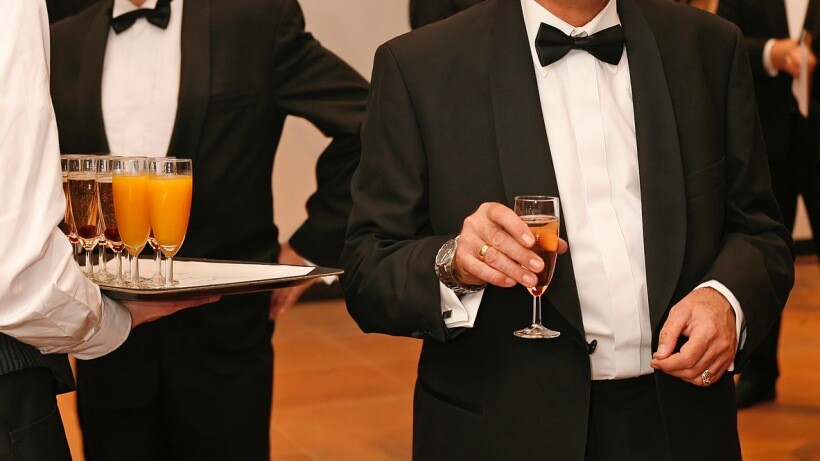
When choosing between tuxedos or dinner or business suits, the choice heavily relies on the type of occasion. For evening events, suits are ideal. But, if you're attending a black-tie affair or a formal dinner, a tuxedo is your go-to. Business suits, on the other hand, are versatile for the office, meetings, and even semi-formal gatherings.
Ever wondered when to wear a tuxedo suit for weddings? This choice is perfect for those upscale ceremonies where you want to look your absolute best. Suits, by contrast, are more often deemed appropriate for less formal nuptials or daytime weddings.
Don't forget to take into consideration the season in which you'll be wearing your suit or tuxedo. Suits in lighter fabrics like linen are perfect for spring and summer, while wool or cashmere suits are more suited for colder months. Similarly, a tuxedo is typically worn during cooler seasons.
In terms of cost
The price bracket for tuxedos and suits can vary significantly. A low-end tuxedo ranges from £150 to £300, while a low-end suit costs between £100 and £250. Often, tuxedos require more detailed tailoring, which adds to their overall cost. Usually, it can go from £7 to £120.
Mid-range tuxedos cost between £300 to £800 mark, while their suit counterparts fall between £250 and £600. The jump in price usually comes with better-quality fabrics and more intricate design options. High-end tuxedos often start at £800, while you'll see high-end suits beginning at £600. The high-end range for both typically involves bespoke dress alterations which can cost anywhere from £7 to £90.
Suit alterations may also influence the total expenses, especially if you’re going for a custom fit or design. To give you an estimate, most seamstresses and tailors charge around £5 to £60 for alterations. A well-fitted suit often requires a significant amount of tailoring, impacting the final cost. In contrast, off-the-rack options might be cheaper but usually need adjustments for a perfect fit.
Designer items naturally command higher prices, not just because of the brand name but also for superior fabric and craftsmanship. Stores that specialise in high-quality formal wear will undoubtedly have higher prices compared to online retailers or department stores.
Need a suit or tuxedo altered for an upcoming event? Post a task on Airtasker!
Ultimately, choosing between a tuxedo and a suit hinges on your specific needs, event, and budget. Remember, a well-fitted outfit can make all the difference, and this often involves some degree of suit tailoring. Whether you're aiming for a custom fit or simply need suit alterations on an off-the-rack option, getting the right help is crucial.
If you're looking to get your suit or tuxedo tweaked to perfection, Airtasker is your go-to platform. You can easily find skilled professionals to handle your alteration task. You can also hire a seamstress to create a custom-fit outfit for other special occasions.
It's simple: just post a task and connect with experienced Taskers who can get your outfit looking elegant. So, why wait? Make sure you shine at your next event!
Tuxedo vs suit
| Tuxedo | Suit | |
| Style |
Features satin or grosgrain facings on lapels and buttons |
Made from the same cloth; no satin or grosgrain accents |
| Accessories |
Paired with bow tie, cummerbund, and patent leather shoes |
Paired with a necktie or bow tie, varied shoe options |
| Fit |
Typically tailored or slim-fit for formal occasions |
Offers tailored or slim fit; versatile for various events |
| Fabrics |
Luxurious materials like wool or mohair |
Range of fabrics, including cotton, linen, and wool |
| Occasions |
Ideal for black-tie events and upscale weddings |
Suitable for office wear, semi-formal events, and weddings |
| Cost |
Generally more expensive; detailed tailoring required |
More affordable; wide range of prices and quality |
FAQs on tuxedos and suits
A dinner suit, often synonymous with a tuxedo, is more formal and typically includes satin or grosgrain details. On the other hand, a business suit is less formal and designed for professional settings without any such embellishments.
A tuxedo is specifically designed for formal or black-tie events and is not typically worn as a regular suit. However, you can experiment with a tuxedo with a more subtle style and details so you can use it for different occasions.
To pair a suit and tie, consider the suit's colour and pattern. A classic approach is to match a solid suit with a patterned tie or a patterned suit with a solid tie to ensure complementary colours.
Find suit tailors, fast
Post a task
Related articles
Related price pages
